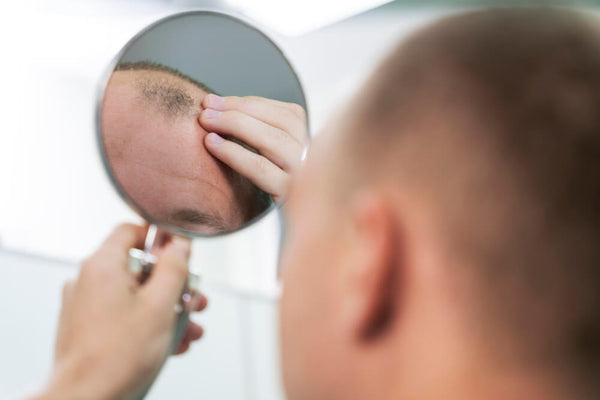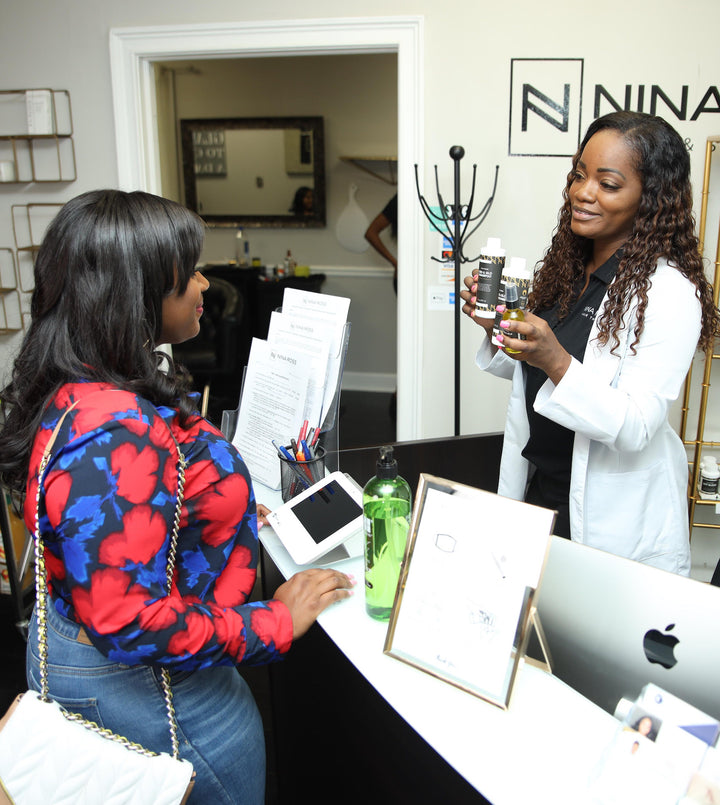I need to tell you about a client I saw yesterday. She brought in her entire hair care collection - dozens of products she'd spent hundreds on. "I'm doing everything right," she told me, her voice full of frustration. "But my hair keeps getting thinner and breaking off."
If this sounds familiar, I want you to know something crucial: you might be following advice that's completely wrong for your specific hair situation. The truth is, most hair care advice is generic, but your hair's needs are anything but.
Let's talk about how to actually care for your hair in a way that promotes health rather than causing damage.
Are You Mistaking Hair Type for Hair Condition?
Here's what most women don't realize: your hair "type" is only part of the story. The condition of your hair matters just as much, if not more.
I see women with beautiful natural hair following all the "curly girl" rules, but they're still dealing with:
-
Breakage from protein overload.
-
Thinning from heavy products clogging follicles.
-
Inflammation from ingredients their scalp reacts to.
-
Shedding from nutritional deficiencies no product can fix.
Your hair could be 4C but also fine, low porosity, and dealing with early CCCA. Or you could have type 2 hair with high porosity from chemical damage. The "type" categories don't capture these crucial details that determine what your hair actually needs.
What Does Your Hair Really Need to Thrive?
Stop thinking about your hair as just "curly" or "straight." Start asking these more important questions:
What's your porosity? Does water bead up on your hair (low porosity) or soak right in (high porosity)? This determines what products can actually penetrate.
What's your density? How many hairs per square inch do you have? This determines whether heavy products will weigh you down.
What's your scalp condition? Is it oily, dry, inflamed, or balanced? Healthy hair starts at the scalp.
What's your hair's history? Chemical treatments, heat damage, and even your health history all affect what your hair needs right now.
Why Are Your Edges Still Thinning Despite "Gentle" Care?
I can't tell you how many women come to me with traction alopecia who swear they're being gentle with their hair. But when we dig deeper, we find:
-
"Protective styles" that are actually pulling too tight.
-
"Strengthening treatments" that are causing more breakage.
-
"Natural oils" that are clogging follicles.
-
"Gentle cleansing" that's leading to buildup and inflammation.
The problem isn't that you're not trying - it's that you're following advice that doesn't account for your specific vulnerabilities.
How Can You Tell If Your Products Are Helping or Harming?
Your hair tells you everything you need to know if you learn to listen. For example, if your scalp is constantly itchy after using a product, it's not "purging" - it's irritated. If your hair feels straw-like and brittle, you might be over-proteinizing. If you're seeing more shedding after starting a new routine, something isn't working. Likewise, if your styles never last, your hair might be overloaded with product.
The best hair care routine makes your scalp feel calm and your hair feel strong - not just look good temporarily.
When Should You Suspect More Than Just "Bad Hair"?
If you're dealing with any of these issues, it's time to consider that you might need more than just better products:
-
Actual bald spots or patches.
-
Scalp pain or tenderness.
-
Bumps or sores that won't heal.
-
Sudden changes in the hair’s outer texture.
-
Thinning that doesn't respond to any products.
These could be signs of conditions like CCCA, folliculitis or one of countless other medical issues that might require a professional treatment. Keep in mind that no amount of perfect hair care can solve these problems.
What Does a Truly Healthy Hair Care Routine Look Like?
The women who maintain healthy hair in our clinic follow these basic principles:
-
They prioritize scalp health over hair styling. Healthy hair grows from a healthy scalp.
-
They understand that at times, less is often more because too many products can create more problems than they can solve.
-
They recognize when they need professional help instead of trying every new product that hits the market.
-
Most importantly, they understand that what works for someone else's hair - even with the same "type" - might not work for theirs.
Ready To Grow Hair You’d Be Proud Of?
Stop guessing what your hair needs. The trial-and-error approach is expensive, frustrating, and often damaging. Book your $99 Hair Therapy Evaluation at Nina Ross Hair Therapy and let's analyze your hair and scalp to create a personalized plan that actually addresses what your hair needs to thrive - not just what your hair type "should" need.














